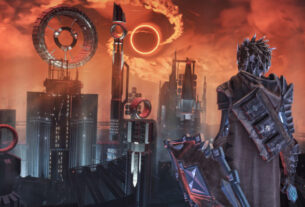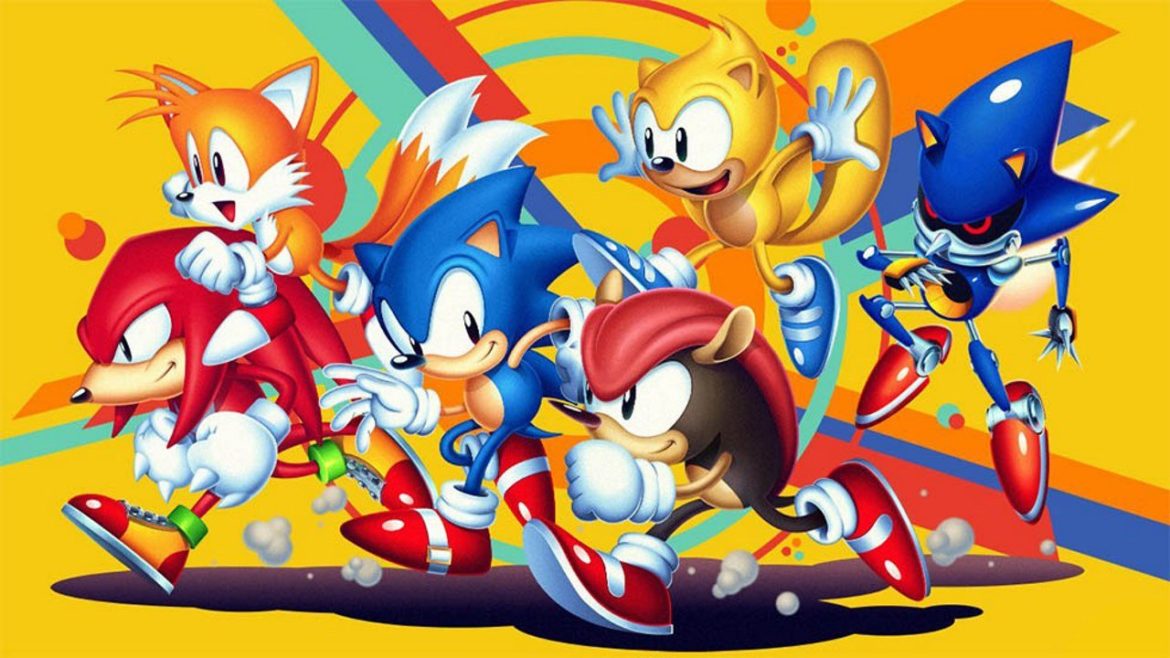
From the opening title’s splash screen, Sonic Mania’s presentation is intoxicating. Its colorful, retro 2D graphics and vibrant ’90s-inspired pop soundtrack is enough to make any Sega Genesis fan squeal in excitement. In this jointly developed game, Sega and members of the Sonic fan-hack community have created a loving homage to the blue hedgehog’s glory days. But Sonic’s latest outing isn’t only concerned with reminding you of his past; though it is decadent in this regard. Sonic Mania exceeds expectations of what a new game in the franchise can look and play like, managing to simultaneously be a charming celebration of the past and a natural progression of the series’ classic 2D formula.
Taking place shortly after the events of Sonic & Knuckles, the game’s story sees Sonic, Tails, and Knuckles getting involved once again in a battle against Dr. Eggman–this time over a mysterious emerald artifact. However, the conniving scientist isn’t alone; enlisting the help of the Hard-Boiled Heavies–a group of customized Eggrobos. But the story takes a backseat as the time honored premise endures: defeat Eggman and his baddies, and collect all the Chaos Emeralds.
Sonic Mania makes a strong first impression thanks to amazing visuals and music. Its presentation replicates the charming aesthetic of Sonic’s earliest games with thorough detail. While the pixelated sprites of Sonic and friends are reminiscent of their Sega Genesis’ counterparts, they take on a new life with a higher degree of detail and animation quality. The new effects add an extra layer of personality to the iconic characters that’s a joy to see in motion.
On the other end of the spectrum, the game sports an assortment of new music tracks and remixes of greatest hits. They channel the New Jack Swing dance music stylings that heavily influenced Sonic’s soundtracks in the ’90s, remaining just as catchy and well-orchestrated here. Both visuals and music work together in Sonic Mania to build up an aesthetic that’s evocative of earlier games, but in a pleasing style that feels contemporary all on its own.
On top of Sonic Mania’s fantastic presentation, the game also controls like a classic-style Sonic game. You have the option to play as Sonic, Tails, or Knuckles; you can even work cooperatively with another player as Sonic and Tails a la Sonic 2. From the get go, the movement physics and overall feel of each character are distinct yet familiar, staying faithful to the originals. The gang’s unique abilities remain intact, albeit with one exception: Sonic has a new Drop Dash, which allows him to quickly roll forward after a jump. It’s a small addition, but it provides a handy new way to pick up speed or avoid incoming danger.
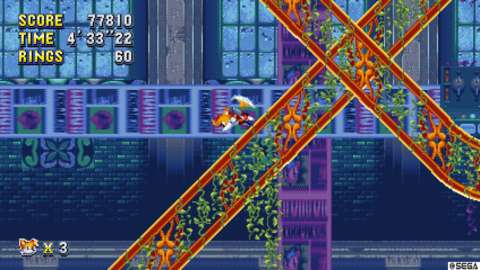
Level design is at the series’ best here, sporting 12 zones that are each meticulously designed with cleverly placed obstacles and varied pathways that keep you guessing. It can feel exhilarating to pass through a multitude of pathways, especially at top speed. No route ahead ever feels incorrect as you sprint through loops or hit springs launching you into different directions, and there are rarely any instances where the action halts without reason. And thanks to the visibility granted by the widescreen aspect ratio and the smooth framerate, your awareness and sense of control running through a zone feels better than Sonic’s classic outings ever did.
It also helps that levels are designed around the abilities of each character. While Sonic can blaze a trail through a zone, Knuckles and Tails can find other paths beyond his reach thanks to their respective climbing and flying abilities, which often lead to new ways of experiencing the same stage. It’s enjoyable to engage with the subtle ways each character interacts with the world and the conveniences they offer. And you’re rewarded for taking the time to do so, as on some occasions, characters even get completely new levels to explore that are designed specifically around their abilities.
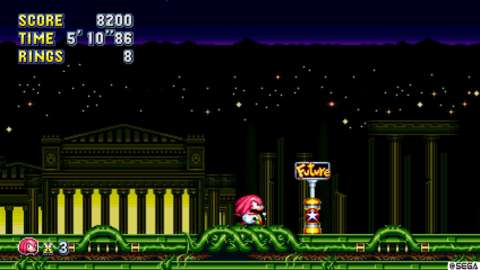
Sonic Mania closely follows its forebears, utilizing the exhilarating sense of speed that the 2D games charted their success upon. However, it never incorporates elements from the past purely for the sake of nostalgia; rather, it expands upon the familiar with new ideas of its own. This is most apparent when you play remixed versions of older zones from the first five games. Sonic Mania’s version of Sonic 2’s Chemical Plant zone introduces a mechanic where you constantly jump on jelly to bounce upwards to new parts of the level. Changes like this liven up the design of well-known levels, offering fresh and gratifying new experiences.
New zones, on top of offering a suite of charming visuals and catchy melodies, deliver plenty of inventive concepts that diversify and build upon the series’ fast-paced level design. Whether it’s by encouraging you to freeze yourself into an ice block to smash through walls, or challenging you to figure out a maze-like sequence of gates to reach the end of a zone, the ideas the game explores give it a strong sense of identity compared to the originals.
In the same style as Sonic 3, every level culminates in a boss fight–ranging from relatively simple, to demanding set-piece battles where you go head-to-head with Eggman and his minions. However, there are some fights that pay homage not only to past games, but early spin-offs from the Sonic’s history, such as Dr. Robotnik’s Mean Bean Machine and Sonic Fighters. There’s also a fair number of more challenging battles that require more advanced tactics to beat. One has you dodging projectiles as you use a series of poles to propel yourself towards a spider robot. Boss fights offer a great balance of difficulty, steadily challenging and entertaining you in numerous ways as you progress.
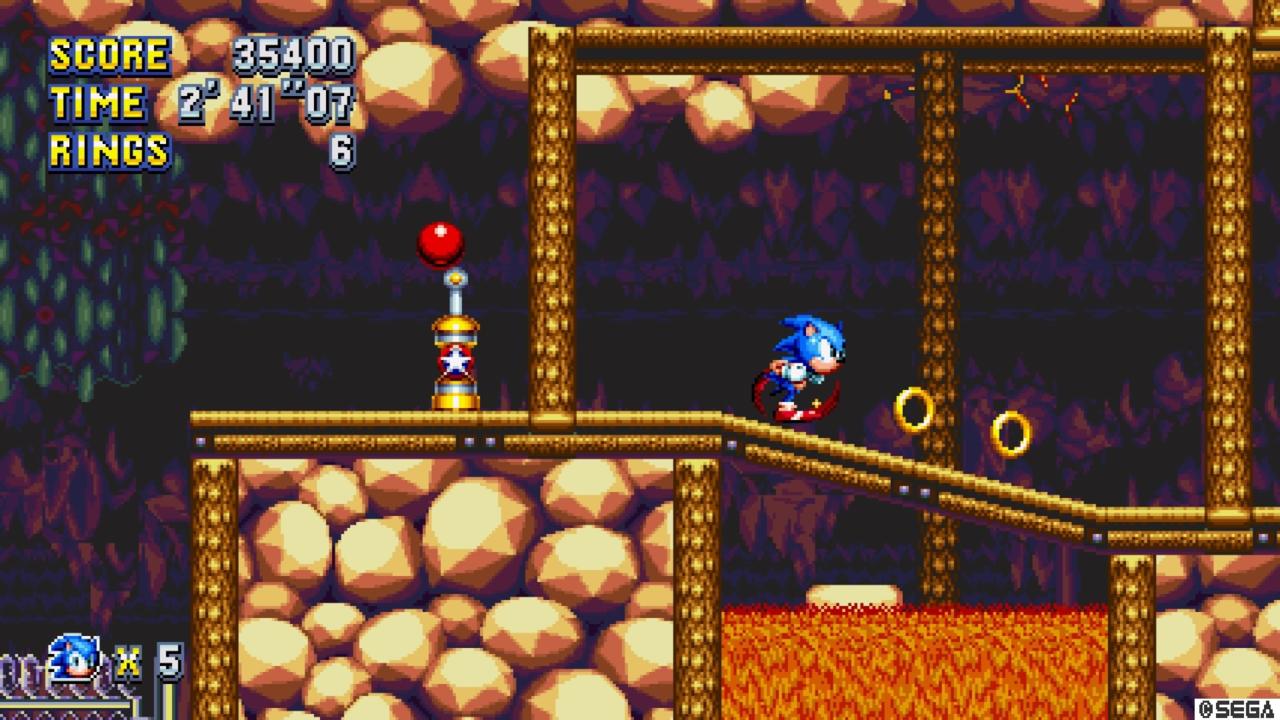
The more you play Sonic Mania, the more it rewards you with reasons to keep playing. Additional modes like Competition and Time Attack offer other ways to experience its levels. Aside from acquiring all the Chaos Emeralds to obtain the true ending, one of the most compelling reasons to replay zones come from Secrets–Sonic Mania’s term for unlocks that give you access to new characters and abilities. For example, you can play through the entire campaign using Sonic’s Insta-Shield ability from Sonic 3. You can even unlock “& Knuckles” mode, where a second player can play cooperatively with you as Knuckles instead of Tails.
For years the Sonic series has chased the legacy of its early games, constantly delivering experiences that either came close or failed to recapture the spirit that made them classics. Whether it was by getting wrapped up in story or putting too much emphasis on speed instead of level design, the newer games lost track of what made the originals great. Sonic Mania methodically uses its sentimental appeal to great effect, but in the process, it heals the wounds inflicted by its most disappointing predecessors and surpasses the series’ best with its smart and interpretive design. An excellent 2D platformer, Sonic Mania goes beyond expectations, managing to be not only a proper evolution of the series’ iconic formula, but the best Sonic game ever made.
Editor’s note: Alongside Sonic Mania’s physical release is a $5 update (included with the physical) that introduces new features that add even more diversity to the game’s high-speed thrills. The most noteworthy addition are classic–albeit lesser-known–characters Mighty the Armadillo and Ray the Flying Squirrel, who each sport their own unique abilities. Mighty’s ground pound makes for a satisfying way to pick up speed and dispatch enemies, and his resistance to spike traps is a nice bonus if you’re more a player with an unhealthy desire to accelerate. On the other hand, Ray’s momentum-based glide ability takes some getting used to, requiring you to alternate directions on the D-pad after jumping to maintain flight. The thrill of stringing together his high-flying antics with a well-timed jump onto an enemy or platform is well worth the effort to learn. Both Mighty and Ray offer subtle, yet substantial additions to the well-established formula.
Returning players are likely to spend the most time in Encore mode, a new campaign that takes you through remixed versions of the game’s stages. But there’s a twist: swappable characters replace extra lives. You start as Sonic and slowly accumulate the game’s playable cast via item boxes and bonus challenges scattered across the stage. You can control and switch between two characters at a time, but when one dies, that character is lost and switched out with whoever you have left on reserve. Encore Mode is a welcome change-of-pace that makes Sonic Mania’s already fantastic levels more tense and exciting. And the ability to play all five characters in a single mode makes the experience all the more varied and joyous.
Beyond these additions and small tweaks, including balancing fixes and the ability to use secret options in any of your save files, Sonic Mania is the same exuberant celebration of Sonic’s past. While it was already a fantastic package on the outset, this new update makes it even better than before. If you missed Sonic Mania the first time around, now is the perfect time to catch up.

